While walking along a dry river bed in Missouri, I was taking a lunch break when I spotted a small brown insect, moving intricately on the rocks. I almost didn’t notice him but there he was. A very small species of praying mantis. I hadn’t seen one of these insects since childhood.
This interaction made me want to learn more about these fascinating insect predators. Below is a compilation of all the information I found on the praying mantis.
What Are Praying Mantis?
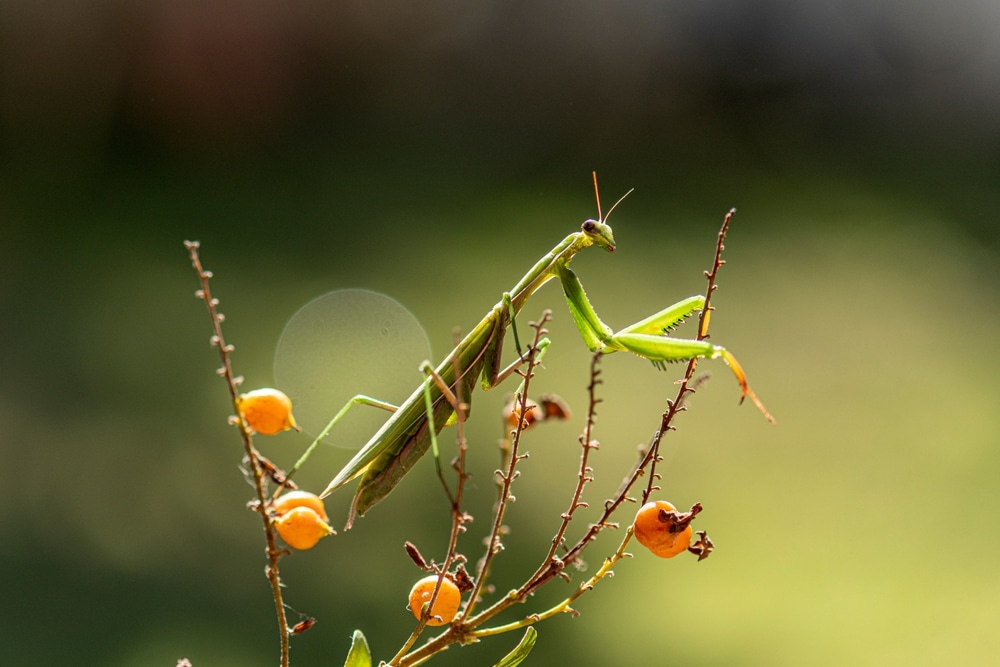
Family Mantidae Overview
Praying mantis belong to the Family Mantidae within the Order of Mantodea. Mantidae is the largest family and was once considered the only family in this order. Now there are 14 other families within Mantodea. Mantodea consists of over 2,500 species worldwide, 1,500 species of Manitdae, with 20 species residing in the United States.
Walking sticks can sometimes be confused with praying mantis, as their bodies are also elongated and thin. Though these two insects are not closely related. The mantis species’ closest relatives are cockroaches and termites.
Native Habitats Of Praying Mantis
This species of insect is found everywhere in the world, except for the cold continent of Antarctica. Although spread worldwide most of these insects are found in warmer areas. This includes tropical and subtropical climate zones.
Anatomy Of The Praying Mantis

They are a very distinctive insect with unique characteristics. Below we will go over some of their key anatomical features.
Key Anatomical Features
The Mantis’s Head And Eyes
With a large triangular head and big compound eyes, Praying Mantis can swivel their head 180 degrees. This gives them advantages in spotting and hunting their prey. Their vision is acute, with compound eyes and stereoscopic vision. This means they can see in 3D with a wide field of vision. They have great depth perception and motion-tracking abilities.
This insect may have the best visuals of all insects with their bionic, superhuman (I mean superinsect) vision. It also helps their ambush predator style of hunting.
Front Legs (Raptorial Legs)
Praying Mantis front legs resemble Swiss army knives. They can fold in on themselves and spring open to grasp prey. This characteristic is called raptorial. Their front legs also have long sharp ridges and spines, similar to a serrated knife. These legs are built specifically for grabbing and holding onto their prey.
Wings And Body Structure
The structure of the body varies for these insects. Most are elongated and thin, but some are wide and ragged and resemble leaves and flowers. This aids their hunting abilities.
Their wings are delicate and differ from species to species. Some have wings but cannot fly. Some cannot fly very well and only make short bursts of flight. More specifically, the wings are used to deter predators, by making this insect seem bigger.
The size of insects is dependent on species, but some species can reach 3-4 inches (7.62-10.16 centimeters) long!
Sexual Dimorphism
They are sexually dimorphic. This means males and females look different. Females are often bigger than males, and their bodies are usually rounder with a stout abdomen shape.
Camouflage Capabilities
One of their greatest mechanisms is their ability to camouflage in their surroundings. They use this to their advantage while ambush hunting their prey and to help avoid predators. We dive deeper into this further down in the article.
Praying Mantis Habitat

Habitat Range
It is dependent on species, but Praying Mantis habitat range includes all continents except for Antarctica. Most species live in tropical and subtropical climate zones and prefer warmer areas. But they can also be found in temperate climates.
Common Environments (Forests, Grasslands, Gardens)
Common environments for Praying Mantis include tropical rainforests. They can also be found in grasslands, forests, meadows, your backyard garden, and even desert ecosystems! they require warmer temperatures for survival. 70–90°F (21–32°C). Often, the cause of death in the fall is due to frost. Humidity is important for them during the nymph stage especially, as it aids in a positive molting experience. They do best in areas with 40-95% relative humidity.
Praying mantises often rely on certain types of plants for camouflage, attracting prey, perching, and as vantage points to hunt.
Water Sources
They require drinking water to survive. They get their water from dew drops on plants and from the insects they prey upon.
Praying Mantis Life Cycle
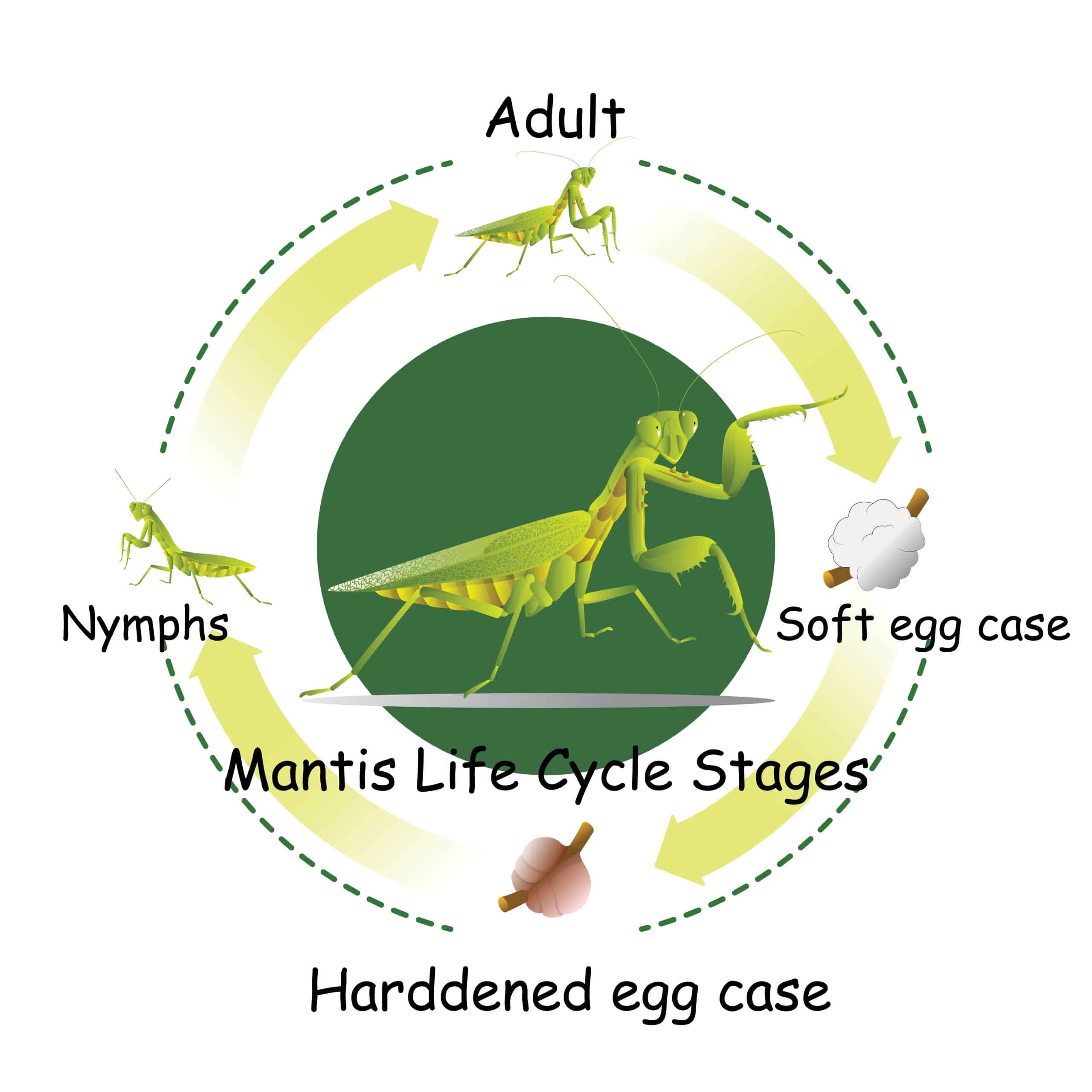
They have a 6 to 12-month life cycle. Manti undergo an incomplete metamorphosis. This means they have three life stages; egg, nymph and adult. The praying mantis lives a full life as a terrestrial being. This means that every stage of their life cycle is on land.
Let’s go into each stage of their life cycle:
Egg
In the fall, female praying mantises lay their eggs after mating. They lay dozens to hundreds, depending on species and environmental conditions. This means if environmental conditions are favorable, she will feel safe to lay more eggs. If not, she may choose to lay fewer eggs in the given season.
The adult female attaches the eggs to plant stems with a frothy foam substance. This foam substance hardens into a shell casing called an ootheca, which protects the eggs. She dies a few weeks after laying her eggs.
Nymph
When the eggs hatch in the spring, nymphs emerge looking like a smaller version of the adult stage. Nymphs spend their time eating whatever they can catch. Nymphs have cannibalistic tendencies. So as soon as they hatch they disperse to a solitary existence, avoiding becoming prey to one of their brothers or sisters.
Nymphs experience several molts throughout this season of their life. They go on until late summer when the adult forms finally emerge.
Adult
Adults emerge from the final molt in late summer to early fall. They have developed wings at this point and begin to mate. Not as common as the myth suggests, cannibalistic tendencies don’t always occur among praying mantis. Males can escape the grasp of hungry females and mate multiple times within the season.
It is believed that females eat males after mating as a reproductive strategy. Males are a high source of protein that can aid in the production and development of eggs. Females then lay their eggs on the stems of plants to begin the cycle anew. They pass away a few weeks later from old age (approximately 12 months).
Adult males typically die of old age in late fall or when the first frost hits.
Praying Mantis Diet And Feeding Habits
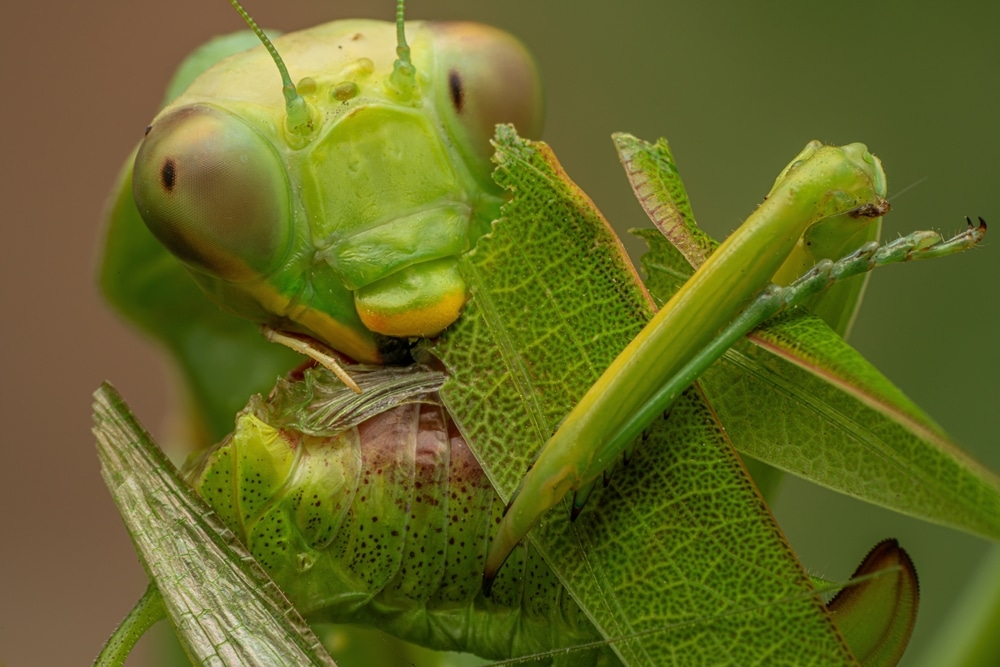
Praying mantis are stealth carnivorous predators. This means they eat any animal smaller than themselves. They are considered ambush predators. This means they will typically sit and wait for their prey, then jump out to capture, utilizing the element of surprise.
What Do Praying Mantis Eat?
Common prey of the praying mantis include:
- Flies
- Beetles
- Crickets
- Grasshoppers
- Moths
- Spiders
They have cannibalistic tendencies and will eat other mantis. Larger tropical species eat all the above insects along with small reptiles, amphibians, and even birds!
Ecological Role
Praying mantis play an important part in the environment. These small insects help to create ecological balance by controlling pest populations like aphids, caterpillars, and other insects that may cause your garden harm. They are also a prey source for important bird species, providing important sustenance in the food chain.
Popular Species Of Praying Mantis
Orchid Mantis (Hymenopus coronatus)
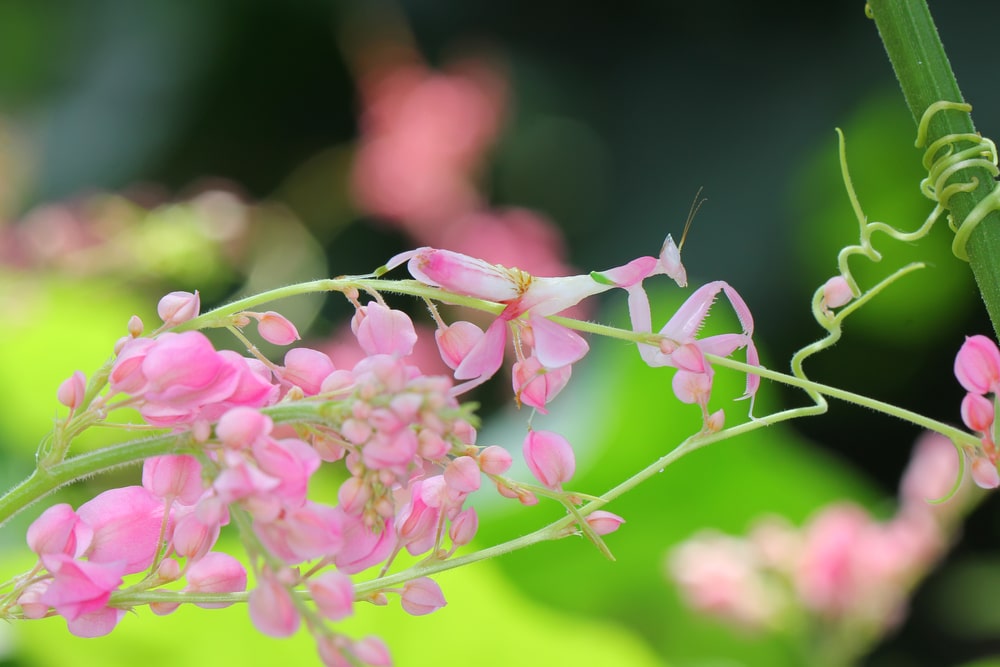
Also known as the locust mantis, this rare species of mantis is native to tropical forests of Southeast Asia.
These insects are part of a group called “Flower Mantis”. They use hunting, camouflage, and defense mechanisms called mimicry. This particular group takes on the appearance of orchid flowers. Their color changes between shades of white, pink and brown. This is dependent on flower coloring.
Their colorful mimicry technique is said to attract more pollinators than the flowers themselves!
They “sway”, which simulates a breeze and rustling of flowers and leaves.
This species experiences major sexual dimorphism. Females are often twice the size of males!
Chinese Mantis (Tenodera sinensis)
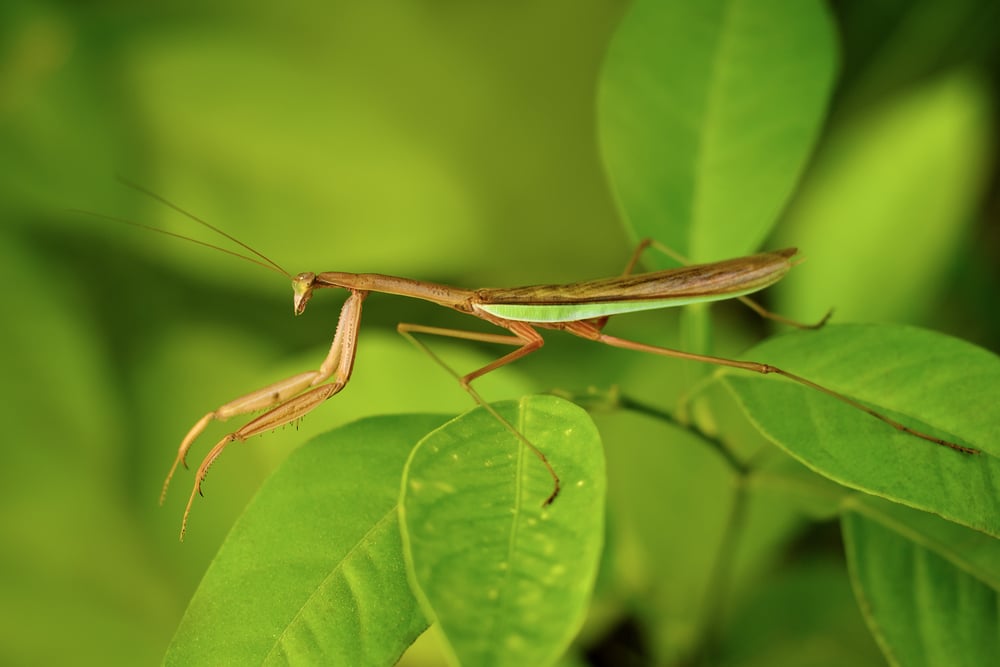
The Chinese Mantis is native to Southeast Asia, and is now considered invasive to North America.
They are brown and green in color. They can reach up to 4.3 inches (10.92 centimeters) in length. It is the largest species of mantis in North America and can be found mostly throughout the Northeast United States.
Giant Praying Mantis (Hierodula patellifera)
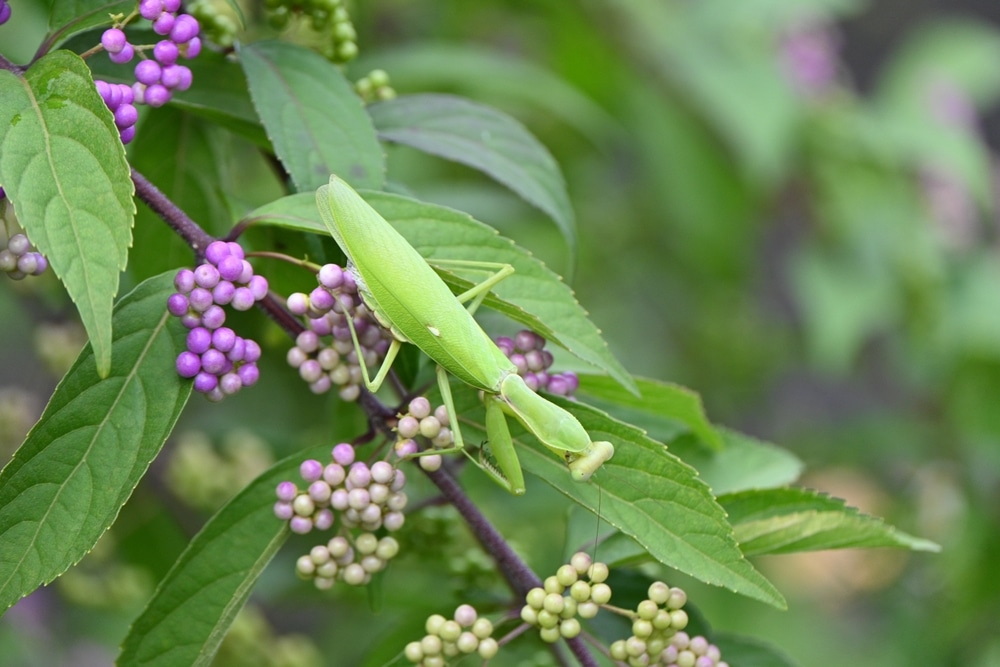
Although the name suggests that the Giant Praying Mantis would be large, this species of insect is among the smallest in the mantis group!
Females grow up to 3 inches (7.62 centimeters) in size, while males only grow to 2.5 inches (6.35 centimeters).
This species varies from brown to green in color. They are found throughout Asia, Italy, and even Hawaii.
Ghost Mantis (Phyllocrania paradoxa)
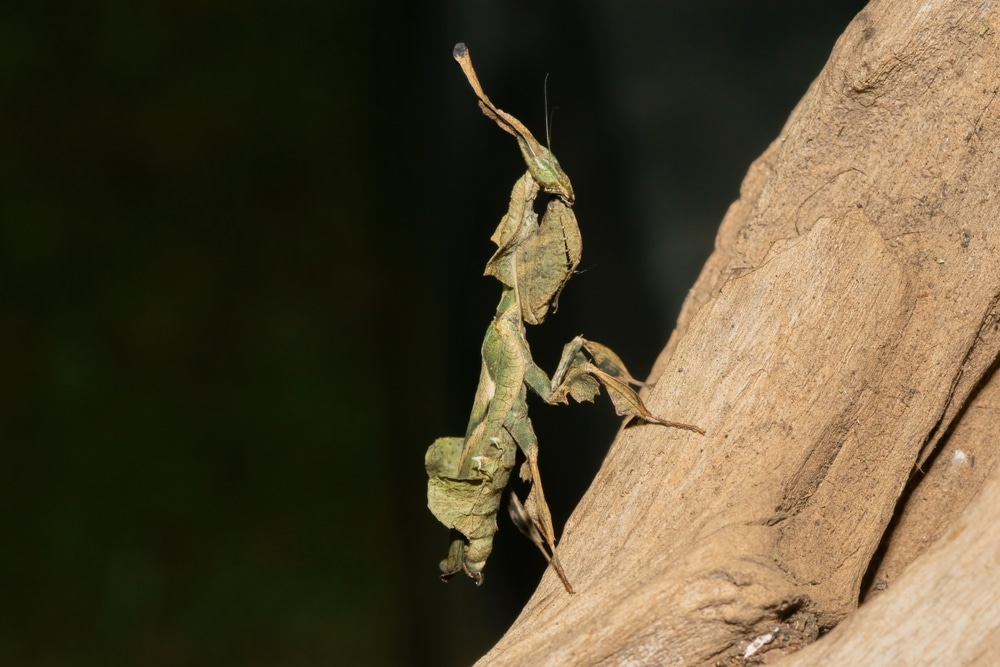
The Ghost Mantis uses mimicry hunting and defense mechanisms that resemble withered leaves. They vary in color from light to dark brown, and green.
This species is native to areas in Africa. It spends its existence on the forest floor, blending in the fallen leaves.
The ghost mantis reaches up to 2 inches (5.08 centimeters) in length.
Devil Flower Praying Mantis (Idolomantis diabolica)
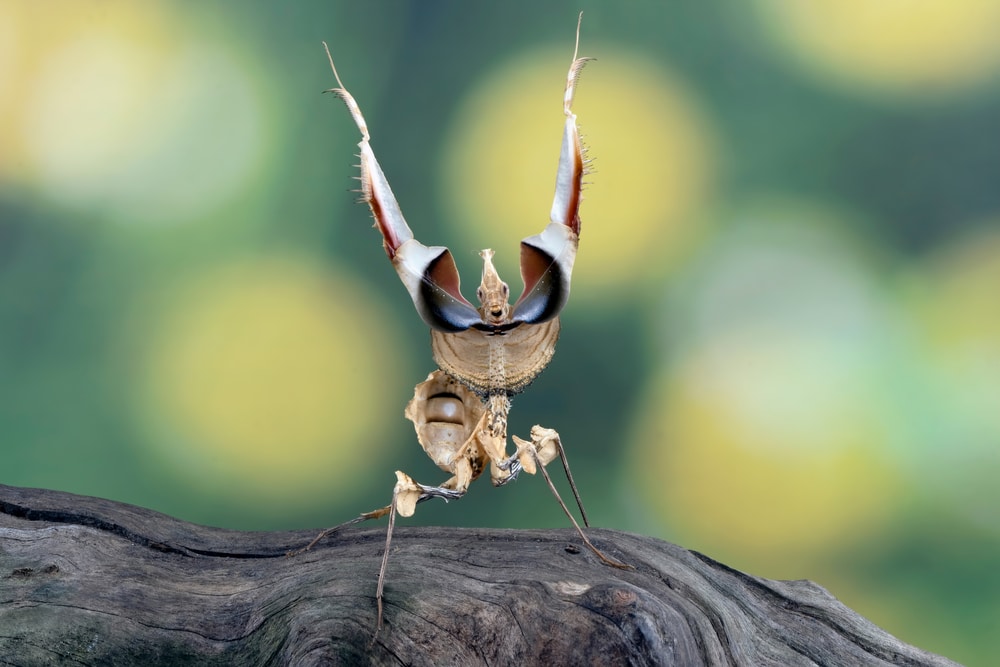
The Devil Flower Praying Mantis is the biggest in the Mantis family. Females grow up to 5.1 inches (12.95 centimeters), while males grow to 3.9 inches (9.90 centimeters).
This species is native to Africa.
Color variations within this species include ranges of purple to black, red, white, and even blue.
Their body shape resembles flowers. This species of mantis is popular in the pet trade.
Pop Culture References
The Praying Mantis has been embedded in culture for hundreds of years. From the Chinese style of martial arts to the 1990’s R.L. Stine Goosebumps book series. These insects have made an impact on society!
Below we will dive into two very different pop culture references of them.
Kung Fu Mantis
Kung Fu Mantis is a style of martial arts that resembles the form of the praying mantis.
This style of fighting originates back to the Ming dynasty in China from (1368-1644).
Generally, this style includes a distinctive hand posture resembling the mantis’s raptorial legs. It includes close contact combat with precise grabbing, striking and punching techniques that resemble the ambush predators’ hunting tactics.
Goosebumps Mantis
In 1995, Goosebumps came out with their 35th book in the series. On the cover, is a giant praying mantis with optical eyes.
In the novel, the main characters are set to have multiple giant praying mantis around their neighborhood. This mantis is also included in the 2015 film as one of the main monsters.
FAQ
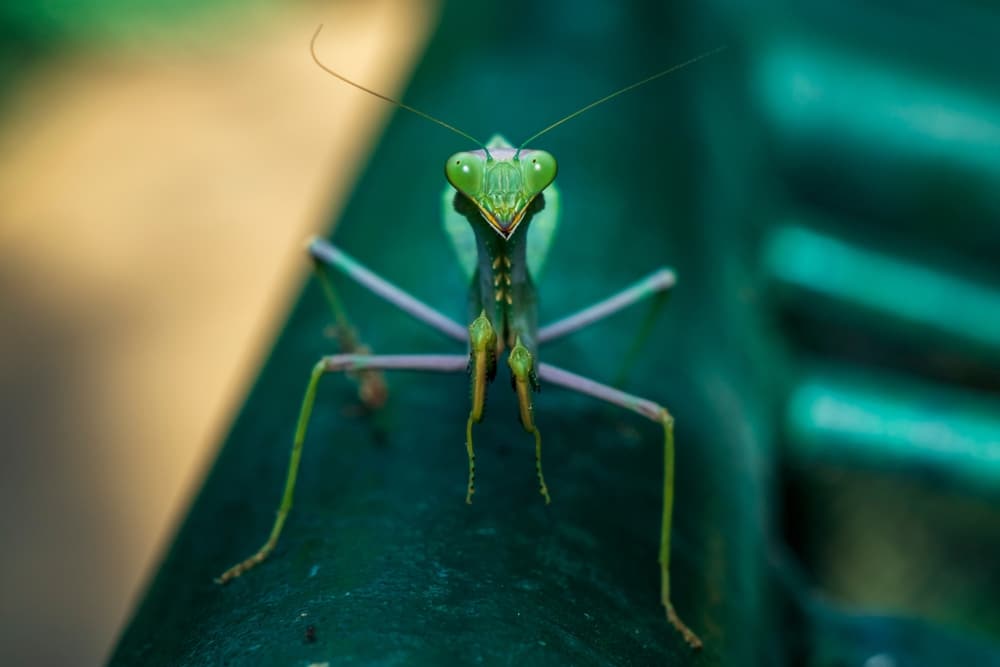
Why Do Praying Mantis Change Color?
One of their biggest defense mechanisms and hunting tactics is their ability to camouflage into their surroundings. They use this tactic to avoid predators and to aid in their ambush hunting style. Some species are able to change color, while others naturally blend into their surroundings with their baseline colors of brown and green.
Nymphs are known to change color as they molt, with each new growth development aiding the depth of their color overall. For the species that do change color, it is dependent on external factors like humidity, temperature, and lighting within their environment.
Can Praying Mantis Fly?
Yes, some species of praying mantis can fly, while other species cannot. But the ones that do have the ability to fly, don’t do it very well! They tend to only fly short distances. Typically, their wings act as a defense mechanism. They will use them as a threat display to ward off other predators like birds.
Their bodies are lightweight allowing them to make quick movements to capture prey. They are more of an ambush predator so their energy is better spent lurking and waiting for their next meal.
How Many Species Of Praying Mantis Are There?
The Mantodea Order consists of over 2,500 species worldwide. 1,500 species are in the family Manitdae. 20 species are found in the United States.
What Are The Differences Between Male And Female Praying Mantises?
Sexual dimorphism is present in this species. In the case of this insect, females are generally bigger than males. Depending on the species, some females can be double in size to their counterparts.
Females will typically die after they lay their eggs while males will live out their 12-month lifespan, passing away of old age or when the first frost hits.
Why Do Female Praying Mantises Eat Males?
It’s not as common as the myth suggests. Males can escape and mate with multiple females during the mating season.
It is thought that females will eat males after mating as a reproductive strategy. They are a high source of protein that can aid in the production and development of eggs.
How Can I Identify Different Species Of Praying Mantis?
Identifying different species of prey mantis can be easy. Key features to look for in identifying various species include:
- Size
- Colouration

